
Featured Blog | This community-written post highlights the best of what the game industry has to offer. Read more like it on the Game Developer Blogs.
When designing our game, I had to figure out what made an excellent escort tower defense game.
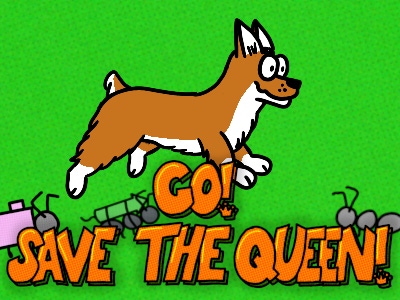
Introduction
For over a year, I've been the lead designer and producer for a small indie game called Go! Save the Queen! This is my first game, and along with a small team of other students at Indiana University Bloomington, we hope to release it in Spring 2024 as part of our senior capstone. Initially, this game was designed and pitched as a real-time strategy game in which you would escort different queens through levels and defend them from an army of insects seeking to stop the ants from finding a new queen; you can still watch the original pitch here (1:52:10 – 2:10:30 specifically) if you’re curious.
However, soon after this pitch, and with input from the judges, we decided to pivot towards a tower defense game. But tower defense games are usually static, not very reaction-heavy, and based on long or medium-term strategy; meanwhile, the DNA of Go! Save the Queen! It is built on short-term strategy, constant threats, no rest, quick reaction times, repeated attempts, and a constantly shifting level, so how would this work? In this blog, I will walk through my design process on Go! Save the Queen! In hopes that it can help others in a similar situation to the one I was in.
A look at Go! Save The Queen!
Before going into specifics, let me go into more detail about Go! Save The Queen! And what we’re aiming for to help give you an idea of what is different. Go! Save the Queen! is what we are dubbing as an “Escort Tower Defense” game, where it is your job to draw lines of ants, which act as your towers, to defend your queen from the hordes of enemies coming in as they move throughout the level. The most significant change from traditional tower defense is how levels work. Unlike a typical tower defense game where enemies move from their spawn to the goal on a set path, Go! Save The Queen! Has the spawns and goal constantly switching from place to place. Not only this, but how the goal moves through the level continuously changes; it can speed up, stop, go to areas where regular enemies or towers can’t reach, and much more. Some other things about the game include aiming for a fair but challenging game and a lighthearted tone.
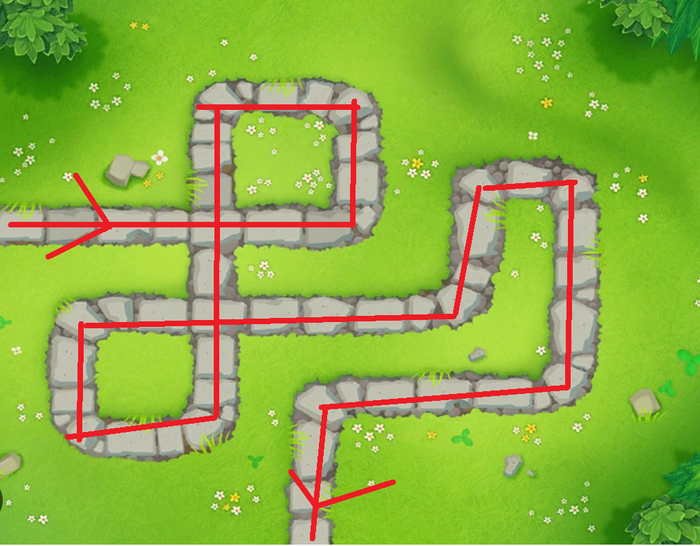
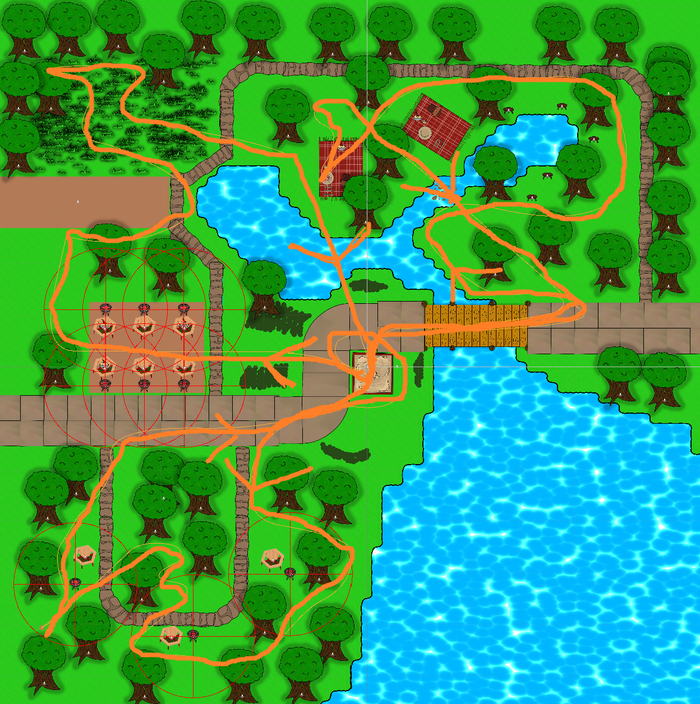
Inspirations
One of the first steps for Go! Save the Queen! Was figuring out what other games had already done, V.S. what we would need to figure out on our own.
Plants V.S. Zombies & Tower Defense
In terms of DNA, we decided early on that Plants V.S. Zombies was the closest to Go! Save the Queen. Unlike most Tower Defense games, Plants V.S. Zombies is less strategy-based and more reaction-based than other tower defense games, even if it is still far off from our game, which is on a far extreme. P.V.Z doesn’t have upgrades like standard tower defense games; levels are only a few minutes long versus the much longer levels of a traditional tower defense game, and it has the same lighthearted tone we’re going for. It doesn’t have everything we’re going for, though; levels in P.V.Z. are super simple compared to the big levels of Go! Save The Queen! And the game is very easy in comparison (although P.V.Z 2 is very challenging). Despite the difference, we have been able to use many elements from Plants V.S. Zombies to help design our game. For example, the guidebook (W.I.P) we have, which details everything in the game, is heavily based on the Almanac from Plants V.S. Zombies, and the game's meta progression is almost the same, with the player getting new ants and seeing new enemies constantly.

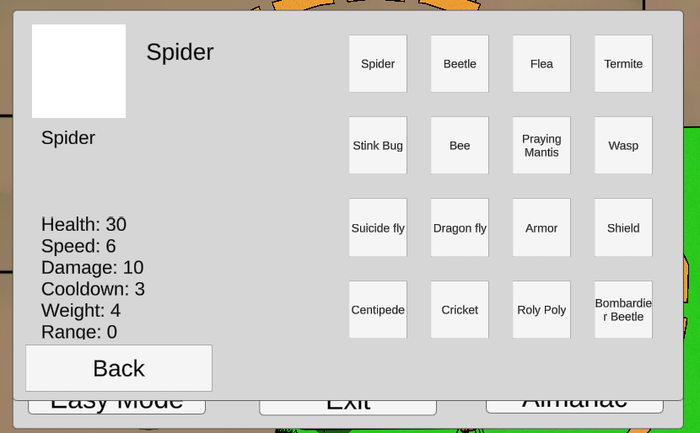
Cuphead & “Hard But Fair Gameplay”
Another game we took inspiration from was Cuphead. Cuphead is very short, but it masks that with challenging but fair gameplay that will have you trying and trying over again. This is where the level length and main level design philosophy come from. Levels in our game are only about 3 minutes to help prevent players from getting stuck for too long; simultaneously, levels require the player to learn what to do and what not to do. Most levels will require the player to play repeatedly until they finish it. It is crucial to make sure players aren’t dying due to unfair reasons like bad enemy placement or unfair queen pathing but to stuff that can be easily remembered, learned, and dealt with the first time if they react correctly. Overall, this philosophy helps the game a lot since we are a small team, only have one designer, and making a level requires a lot more than your average tower defense game; it helps give the game more length.
Bullet Hells & Enemy Spawning
The last inspiration I wanted to talk about is Bullet Hells. As I said before, unlike traditional tower defense, enemies don’t come from one location but instead from around the level towards the queen. This is inspired by bullet hells, where things collapse in from around, and it’s your job to deal with them. Now, I will get more into designing enemy spawns a bit later, but overall, Bullet Hells give a system that works for enemy spawning,
Putting everything together
After the team figured out how the game would look with this new direction, it was time to assemble everything. In this section, I will go through what is unique to our game and the considerations I had to make the experience as best as possible.
Systems
When it came to systems, luckily, only a little had to change from a traditional tower defense in terms of core systems; the idea of placing towers and having them attack automatically worked well. Meanwhile, the significant addition to enemies was cooldowns to their attacks, since once they got to the queen, they would attack it instead of getting to their destination and disappearing like a traditional tower defense game. They also needed to have more advanced movement AI to track the queen. Another of the most significant changes is what the towers and enemies focus on; while you have your standard stuff like primary attackers, explosive users, status effect givers, etc, this game has many enemies and towers focused on disruption compared to normal.
In terms of ants, 4 of the 12 have ways to mess with enemies in some way, while 5 of 16 enemies have ways to disrupt the ants attacking them. The main reason for this is due to the level design. With how big the levels are, it is essential to make ants that allow the player to manipulate the enemies in beneficial ways. For example, some ants push enemies back, potentially into things that could kill them, like water, or some ants block paths and force enemies to go around. Meanwhile, enemies that disrupt ants were made to prevent boring strategies. For example, I brought up ants that block paths; if they had no way to be dealt with, then most enemies would be easy to deal with; just block all their paths. To deal with this, the termite enemy can eat through them, or the cricket enemy can lure them away (not pictured).
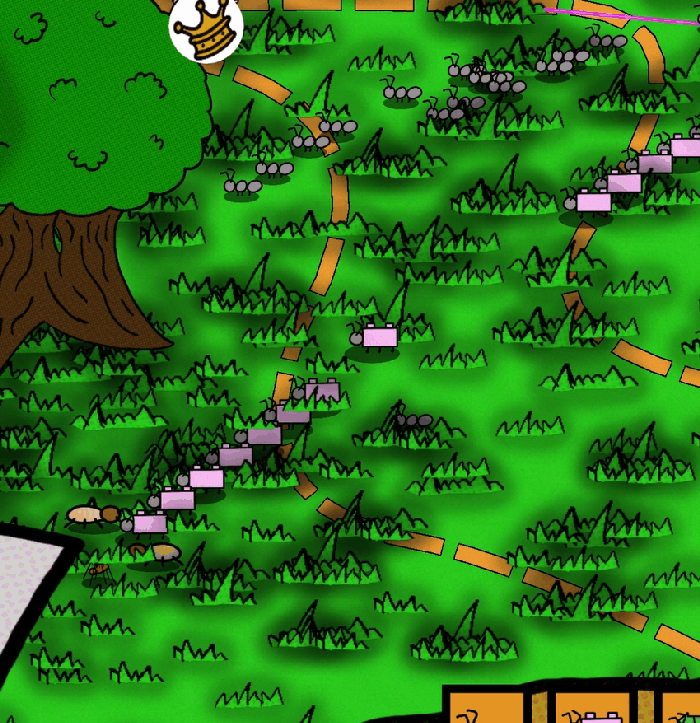
Levels
The biggest hurdle to get over was how to make an incredible level; we spent around three months in early 2023 trying to figure this out. There are many things to keep in mind when designing a level for Go! Save The Queen! There are three main parts to creating a level: boxing it out, setting up the queen path, and setting up the enemy spawns.
Level Boxing
While this is the simplest of the three, it can be very time-consuming. You start from nothing, and it is your job to decide what areas of interest you will have in it, all while keeping in mind where enemies will spawn, how they will move through it, and how the queen will move through it. Because of this, it can be very time-consuming, even if it is just greyboxing.
Queen Pathing
Unlike regular tower defense games, where pathing is a simple “stop the enemy before they get from their spawn to the goal,” our game’s pathing is based on an animal or an object; for this example, let’s use the Corgi Queen. Because the path is based on a corgi, it must be designed as if a corgi is moving through the level. This corgi isn’t smart; it’s just a corgi living and doing what it would do: playing, eating, smelling, exploring, etc. Because of this, pathing isn’t just setting up a bunch of waypoints. It’s also a story: what is the corgi doing at all these points? Why does the corgi go on such an odd path to the end instead of straight there? Does it make sense in the level? You also have to consider stuff like Does it speed up? Stop? Etc. Despite how hard it might sound, I find this the easiest and quickest part since you usually come up with the story during the grey boxing them.
Spawning Enemies
There are two main factors to consider when spawning enemies: the number of enemies coming in and the time to get to the queen.
The number of enemies is simple: the more you spawn, the more time you need to give the player to respond. In a standard tower defense game, this doesn’t matter since your defense constantly builds up, but in Go! Save the Queen! Your queen can move away from your defense, forcing you to build up somewhere else where you don’t already have something.
Time to get to the queen is exactly what it sounds like; how long does it take for the enemy to get to the queen from its spawn point?
Seems simple, right? Those are the main factors; all the subfactors must also be considered.
Are units already in the area?
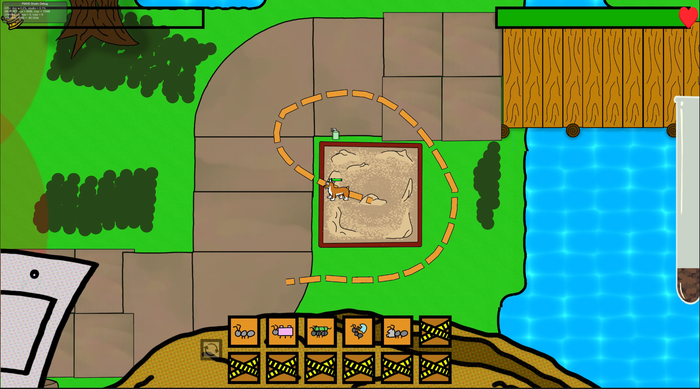
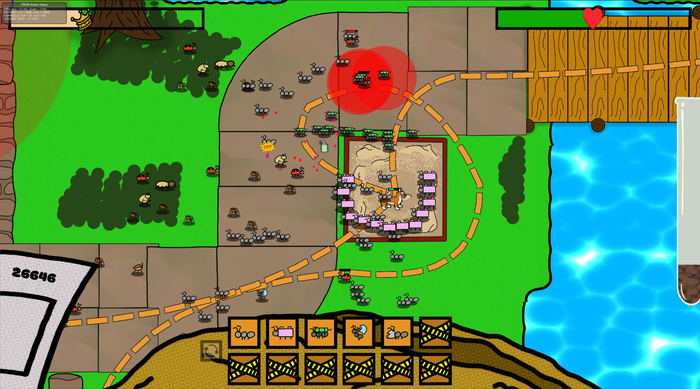

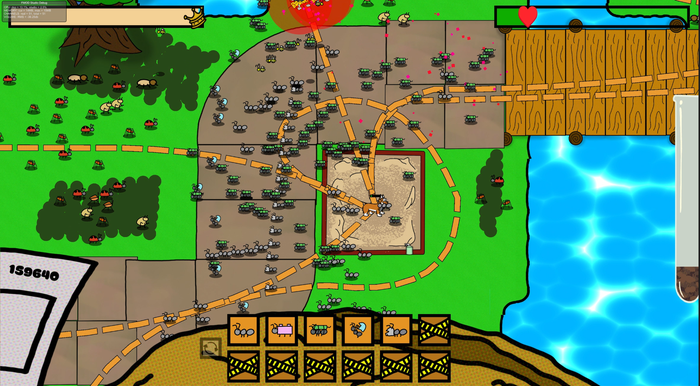
What does the level around the queen look like?
What type of enemies are you spawning?
How far into the level is it?
What is the queen doing?
Should the attack be concentrated or wide?
Is the player's attention divided?
All these factors go into just one enemy spawn; multiply that by the 80 average enemy spawn locations (not counting duplicates), and you get the workload for setting up the spawns in 1 level.
Conclusion
Designing a new sub-genre can be incredibly hard; it’s no easy task, but I hope that does not stop people from trying. I, for one, had, and still am having, a lot of fun making this game, and I think it’s incredibly rewarding. If I had to give one piece of advice for someone going into the unknown, I would say, “Borrow what has already been done and spend your time making the new idea you have as great as it can be.”
Thank you to everyone who read all the way through. This ended up much longer than I expected.
If you would like to, Go! Save the Queen! Does have some socials if you want to know more: Twitter/XYoutube and so do I if you want to talk: Twitter/XEmail.
Read more about:
Featured BlogsAbout the Author(s)
You May Also Like








